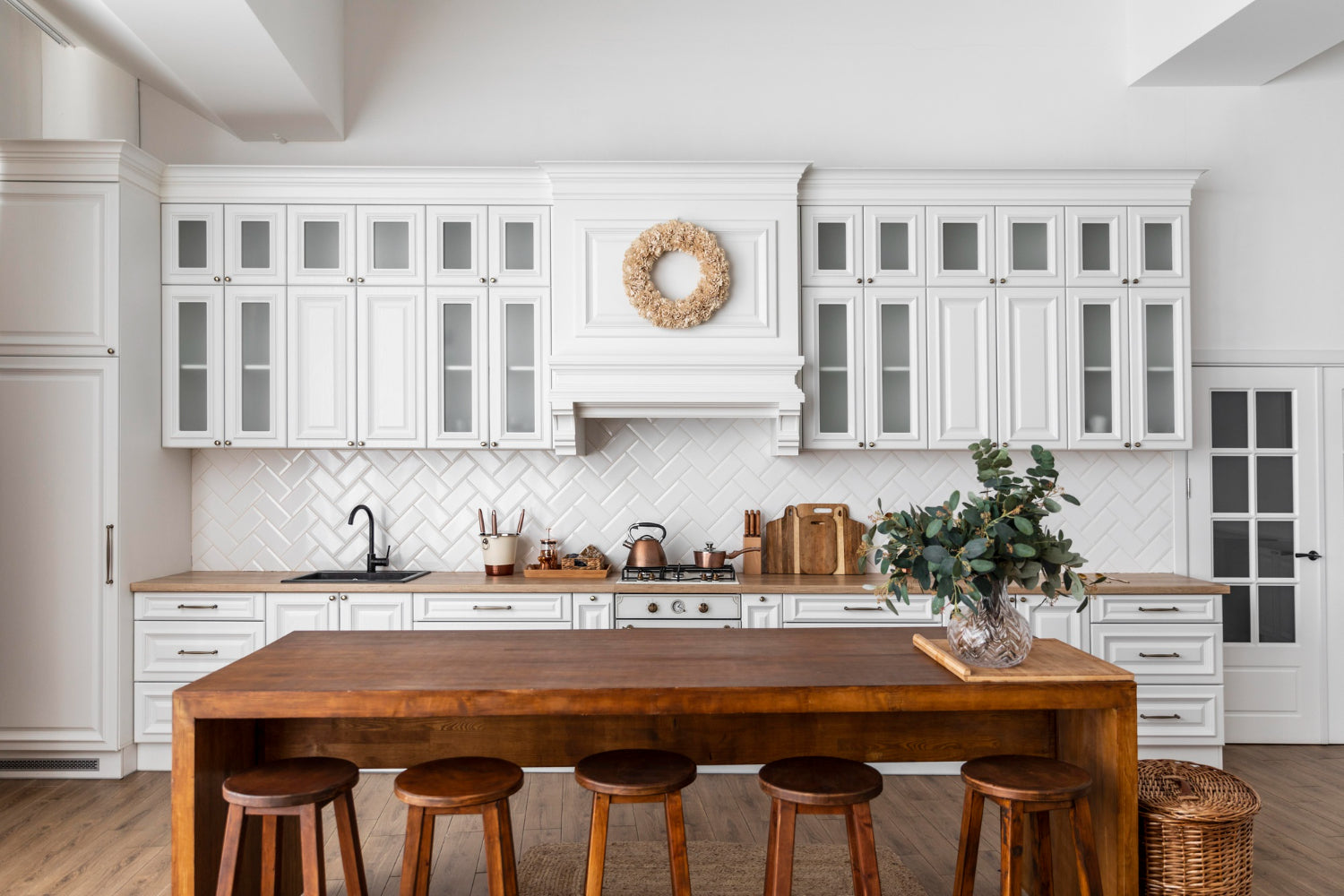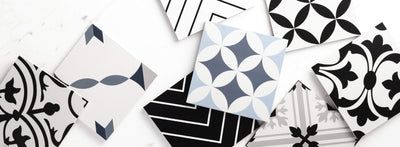Looking to create a focal point in your kitchen? Kitchen tiles, particularly splashback tiles, provide the means of completing and perfecting your entire kitchen scheme by drawing a connection between your selected cabinetry finishes, benchtop, wall paint and flooring. There are several key considerations to keep in mind when it comes to selecting your new splashback tiles, from the material used, to sizing and scale, as well as grout types and colours in order to create the perfect look.
They were once the only material option to be placed behind or above the kitchen sink, stove, and countertop. When other materials such as glass and acrylic became available, splashback tiles faded out into irrelevance. However, they’ve now come full circle in splashback popularity and there are more options than ever!
Which materials can I use as a kitchen splashback?
Materials for kitchen splashback tiles can range from porcelain and ceramic to glass or stone. It's essential to consider specific regulations and guidelines, especially if you're installing a gas cooktop in your new kitchen to meet Australian Standards.
Gas cooktops differ from other models because they emit heat from the burners, which can transfer to nearby vertically installed surfaces like the splashback. For safety, there should be a minimum clearance of at least 200mm between your splashback and the nearest gas burner. In cases where meeting this clearance isn't feasible, the splashback must be made of a non-combustible material, such as porcelain, to prevent potential fire hazards in the kitchen.
Porcelain emerges as the optimal choice in such scenarios. Luckily, there's a wide range of porcelain tiles available for use as a splashback, ensuring both safety and a plethora of stylish options to fit any budget and design preference.
The benefits of different kitchen splashback
Ceramic and porcelain are the most commonly chosen materials for kitchen splashbacks, though other options include metal, stainless steel, natural stone, cement, and marble tiles. Here are the benefits of choosing different materials:
Benefits of Ceramic Tiles:
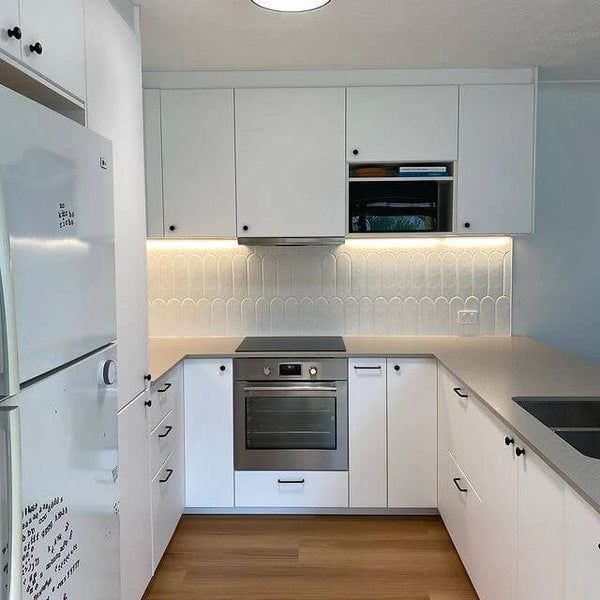
Ceramic tiles offer a range of benefits, including availability, affordability, water resistance, versatility in finish options, and cost-effectiveness compared to porcelain tiles.
Benefits of Porcelain Tiles:
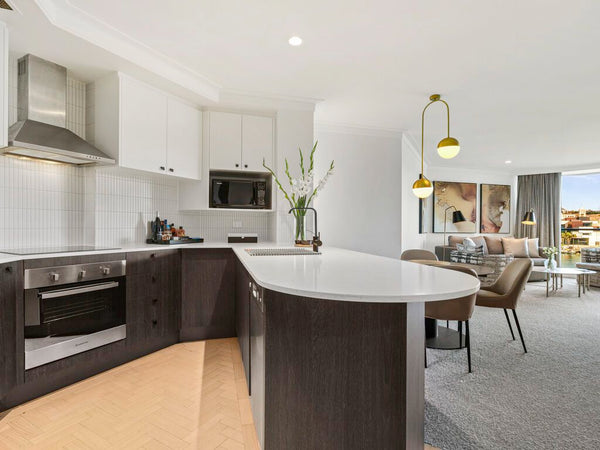
Porcelain tiles have advantages like being very durable because they're fired at high temperatures, so they don't need extra protection. They're also tougher than ceramic tiles and almost waterproof because they're virtually nonporous.
Benefits of Glass Splashbacks:
Glass splashbacks come in many colours, making them versatile for any kitchen style. They also help brighten up the room by reflecting light effectively. Additionally, being naturally non-porous, they resist stains well. For a striking appearance, mirrored glass tiles can be used to create a dramatic effect.
How to choose the size of kitchen splashback?
When selecting tile sizes for your kitchen splashback, you'll encounter an impressive array of options. From tiny mosaic tiles and classic subway tiles to elongated rectangles or ornate shapes like lanterns or fish scales, the choices seem endless.
Considering the overall size of your splashback area can help you refine your options. While standard kitchen splashback heights typically measure around 600mm, this figure can be adjusted to fit your specific needs, especially in custom-designed kitchens. Heights may vary between the standard 600mm and up to 700mm or 750mm, depending on your personal preferences and requirements.
Using large format tiles like our Terrazzo tiles can result in a sleek and modern splashback with minimal grout lines, adding a touch of luxury to your kitchen.
For a simple and elegant solution, mosaic tiles and subway tiles are versatile options suitable for any kitchen size. However, their installation may require more time and attention to detail, resulting in a higher price tag.
Another option is to use larger tile sizes, such as rectangular tiles arranged vertically. This trend can create a visually stunning effect, particularly for splashbacks with a height of 600mm, which is a standard tile length available in many collections. This allows for a wide range of colour and texture choices to complement your kitchen design.
To summarise, smaller tiles mean more grout lines, so choose carefully, depending on how big of an area the splashback is covering. Large-format tiles look cleaner and less busy than small tiles if the kitchen splashback is a larger area. Large-format tiles are also quicker and easier to install.
How to choose the best splashback colours for your kitchen?
When it comes to designing your kitchen, choosing the right splashback colour can make a huge difference.
Not only can a splashback provide functionality by protecting your walls from water and food stains but it can also enhance the overall aesthetic appeal of your kitchen. The right colour can tie together your kitchen’s design, complement your cabinets, and even create a focal point. Thus, here are a few factors that you should consider before making a decision:
- Harmony with Kitchen Design: Ensure that the chosen colours complement the overall design and style of your kitchen. Whether your kitchen boasts a modern, minimalist, or traditional aesthetic, the splashback colours should seamlessly blend in with the existing decor.
- Lighting Considerations: Assess the natural and artificial lighting in your kitchen space. Lighter hues can create an illusion of spaciousness in smaller kitchens, while darker tones can lend a sense of depth and drama to larger areas.
- Personal Preference: Your own taste and preferences play a significant role in selecting the right colours. Decide whether you prefer vibrant and bold shades or subtle and neutral tones that align with your individual style.
- Aesthetic Impact: Consider the visual impact you wish to achieve. A splashback in a striking colour can serve as a captivating focal point, adding character to your kitchen. Alternatively, a more understated hue can provide a timeless backdrop for other design elements.
- Practicality: Keep practicality in mind when choosing colours. Lighter shades may show stains and fingerprints more prominently, while darker colours can offer better concealment. Opt for a colour that is easy to clean and maintain in your daily kitchen activities.
- Sample Testing: If possible, obtain samples of the splashback colours you're considering. Testing them in your kitchen environment will allow you to assess how they appear under various lighting conditions and alongside your existing cabinetry, countertops, and flooring.
Other considerations
When selecting a splashback, it is also important to consider your budget. While some materials such as marble or granite can cost considerably more, they can add significant value to your home. Additionally, some materials may require professional installation, which can add to the overall cost.
Finally, consider the style and age of your home. A modern splashback may not be appropriate for a traditional or period-style home. Similarly, a vintage-style splashback may look out of place in a modern kitchen.
In conclusion, a kitchen splashback is an essential component of any kitchen, providing both protection and style. When selecting a splashback, consider its functionality, aesthetic appeal, budget and the style of your home. With the right splashback, you can create a beautiful and functional kitchen that will be the envy of your friends and family.
How to choose the right splashback pattern for your kitchen?
Splashback patterns come in a variety of styles, each offering a different effect when incorporated into your kitchen design. When choosing from these diverse options, it's important to consider how each pattern will impact the overall look and feel of your space.
Geometric shapes have risen in popularity. Common options for kitchen splashbacks include:
- Hexagon tile
- Herringbone pattern
- Mosaic tiles
A modern style idea is to take the look of traditional subway tiles and place them in a herringbone pattern. Grey or black grout works well as an accent in white kitchens.
Hexagon Tiles
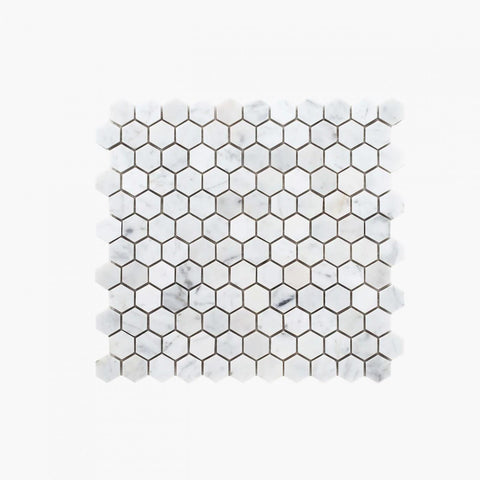
In terms of material options, hexagon tiles are available in a variety of materials including ceramic, porcelain, glass, and natural stone, offering flexibility in design and durability. Whether you prefer a sleek and modern look or a more rustic and textured feel, there is a hexagon tile option to suit your taste and style.
Herringbone Tiles

Herringbone tiles offer a timeless and elegant option for kitchen splashbacks, combining beauty with practicality to create a space that is both visually stunning and functional. Whether used as a subtle accent or as the focal point of the kitchen, herringbone tiles can help you achieve the perfect splashback that reflects your personal style and enhances the overall ambiance of your home.
Mosaic tiles
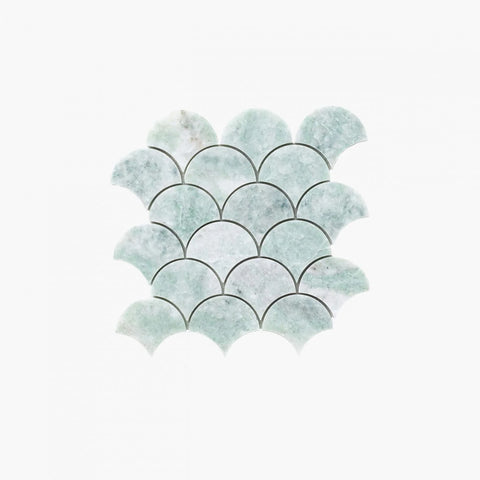
One of the standout features of mosaic tiles is their versatility. They can be arranged in various patterns, including classic grid layouts, herringbone designs, or even intricate mosaic murals, adding visual interest and personality to the kitchen. Additionally, mosaic tiles are available in a wide range of materials, including glass, ceramic, porcelain, and natural stone, providing flexibility in terms of style and durability.
In Conclusion
In summary, selecting the perfect kitchen splashback involves careful consideration of various factors, including materials, sizes, colours, patterns, and practical considerations. Ceramic and porcelain tiles offer durability and versatility, while glass splashbacks provide a modern and sleek aesthetic. When it comes to size, options range from standard heights to custom designs, with larger format tiles and vertical arrangements becoming increasingly popular. Colour choices should harmonise with the overall kitchen design and lighting conditions, while patterns can add visual interest and personality. Ultimately, the right splashback enhances the functionality and aesthetics of the kitchen, reflecting the homeowner's style and preferences while also considering practicality and maintenance needs.
If you'd like to preview different design styles, you can try our free TMhouse visual design tool. Simply drag and drop with your mouse to see the desired design effects. We also put out helpful articles, tips and guides to help your bathroom, kitchen, living room and bedroom design. Remember to check out our tile and bathroom blog!
Let us know which of these tile styles you love the most and the Tilemall team will send up to 5 cut samples to your home at no cost - all we ask is that you cover a modest $15 shipping fee.
